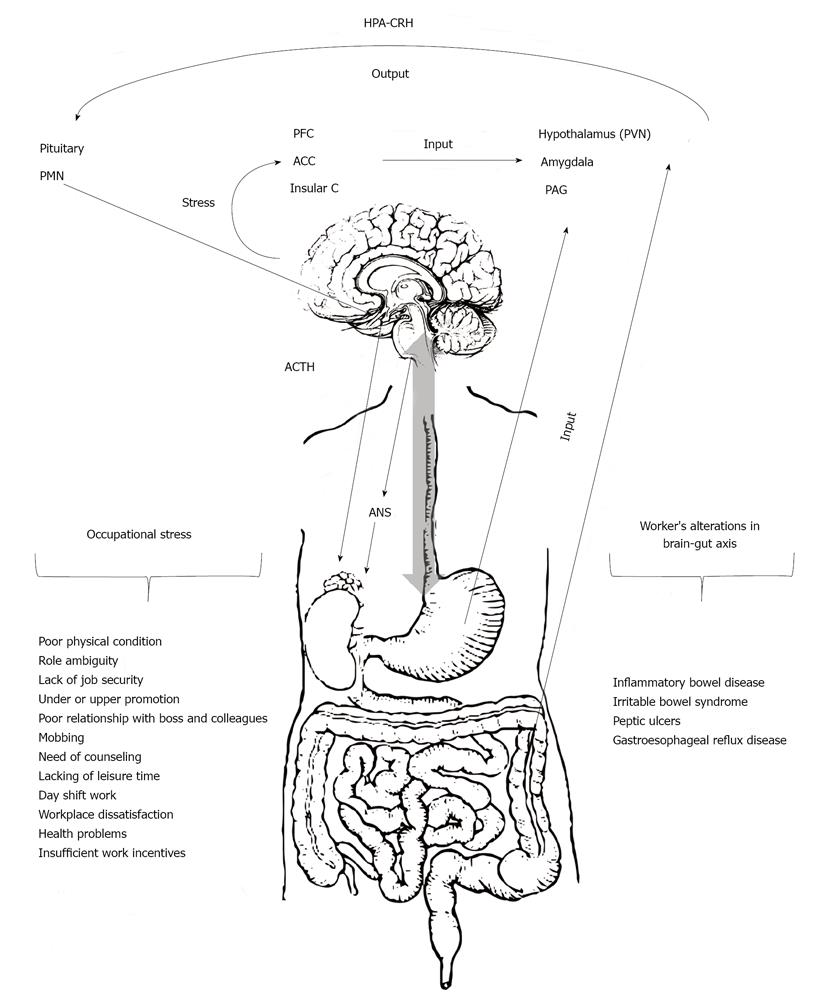Copyright
©2013 Baishideng Publishing Group Co.
World J Gastrointest Pathophysiol. Nov 15, 2013; 4(4): 108-118
Published online Nov 15, 2013. doi: 10.4291/wjgp.v4.i4.108
Published online Nov 15, 2013. doi: 10.4291/wjgp.v4.i4.108
Figure 1 Representation of the hypothetical mechanism by which occupational stress produces gastrointestinal tract alterations in workers.
Stress during job development (see occupational stress) generates a response of the network integrated by the hypothalamus (paraventricular nucleus), amygdala and periaqueductal grey. These brain regions receive input from visceral and somatic afferents and from the medial prefrontal cortex (PFC) and the anterior cingulated (ACC) and insular cortices (Insular C). In turn, output from this integrated network to the pituitary and ponto-medullary nuclei (PMN) mediates the neuroendocrine and autonomic responses in the body. The final output of this central stress circuitry is called the emotional motor system and includes the autonomic neurotransmitters norepinephrine and epinephrine and neuroendocrine (hypothalamus-pituitary-adrenal axis, HPA) and pain modulatory systems. PVN: Paraventricular nucleus; PAG: Periaqueductal grey; GIT: Gastrointestinal tract; ACTH: Adrenocorticotropic hormone; CRH: Corticotrophin-releasing hormone; ANS: Autonomic nervous system.
- Citation: Huerta-Franco MR, Vargas-Luna M, Tienda P, Delgadillo-Holtfort I, Balleza-Ordaz M, Flores-Hernandez C. Effects of occupational stress on the gastrointestinal tract. World J Gastrointest Pathophysiol 2013; 4(4): 108-118
- URL: https://www.wjgnet.com/2150-5330/full/v4/i4/108.htm
- DOI: https://dx.doi.org/10.4291/wjgp.v4.i4.108









